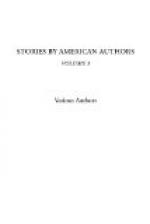The “Numancia” hoisted her boats and stood to the westward. Shortly afterward she exchanged signals with the “Zaragoza,” “Arapiles” and “Vittoria.” The war-vessels drew together, the transports came alongside of them, and fresh supplies of coal and provisions were delivered. Then the transports headed to the south, and the men-of-war laid their course for New York.
III.
THE METROPOLIS BELEAGUERED.
Three ships of the Spanish squadron named were armed with Armstrong guns. Their combined batteries aggregated eight cannon of eighteen tons four of twelve tons, eleven of nine tons, and twenty-eight of seven tons. The “Zaragoza” carried twenty guns of another pattern, ranging in calibre from eleven to seven and three-fourths inches. The total number of cannon which would thus be brought to bear upon New York and its suburbs was seventy-one.
The shot of the Armstrong guns above named vary in weight from four hundred to one hundred and fifteen pounds. If the entire number of guns should each deliver one shot, the total amount of iron projected would exceed six tons in weight.
The arrival of the Spanish vessels was not known until dawn of the morning of April 11th. Then they were descried on the horizon by the watchers at Sandy Hook. At first sight it was supposed that they had encountered heavy weather and lost their light spars; but, as they approached nearer, it was seen that each ship had sent down all her upper rigging, and had housed topmasts.
There was no mistaking what this meant. It was the stripping for battle.
It was also noticed that the ships steamed very slowly in single file; that from the bows of each projected a fork-like contrivance, and that in advance of the leader were several steam-launches, between which, and crossing the path of the large vessel, extended hawsers which dipped into the water. Evidently the new-comers had a wholesome dread of torpedoes, and hence the use of bow torpedo-catchers and the dragging-ropes.
No flag of any sort was exhibited.
Meanwhile the guns of all the sea-coast batteries along the shores had been manned, ready to fire upon the huge black monsters as soon as they should come within range. The order had been given to commence firing on the hoisting of a flag and on the discharge of a heavy gun from the signal station on Sandy Hook, where General Hancock had posted himself with his staff.
In the city the time for excitement had passed. The business section was deserted, most of the men being either in the fortifications or under arms in the camps, ready to move as directed to repel any attempt on the part of the enemy to effect a landing.
There had been no general exodus from New York, as it was not believed possible that the enemy’s missiles could reach the city proper. In Brooklyn, however, but few people remained. All the churches in the city were open, and with singular unanimity the people flocked into them. No public conveyances were running; few vehicles moved through the streets. The silence was like that of a summer holiday, when the people are in the suburbs, pleasure-seeking.




